1.
Introduction
Let C denote the complex plane and Cn the n-dimensional complex Euclidean space with an inner product defined as ⟨z,w⟩=∑nj=1zj¯wj. Let B(a,r)={z∈Cn:|z−a|<r} be the open ball of Cn. In particular, the open unit ball is defined as B=B(0,1).
Let H(B) denote the set of all holomorphic functions on B and S(B) the set of all holomorphic self-mappings of B. For given φ∈S(B) and u∈H(B), the weighted composition operator on or between some subspaces of H(B) is defined by
If u≡1, then Wu,φ is reduced to the composition operator usually denoted by Cφ. If φ(z)=z, then Wu,φ is reduced to the multiplication operator usually denoted by Mu. Since Wu,φ=Mu⋅Cφ, Wu,φ can be regarded as the product of Mu and Cφ.
If n=1, B becomes the open unit disk in C usually denoted by D. Let Dm be the mth differentiation operator on H(D), that is,
where f(0)=f. D1 denotes the classical differentiation operator denoted by D. As expected, there has been some considerable interest in investigating products of differentiation and other related operators. For example, the most common products DCφ and CφD were extensively studied in [1,10,11,12,13,23,25,26], and the products
were also extensively studied in [14,18,22,27]. Following the study of the operators in (1.1), people naturally extend to study the operators (see [5,6,30])
Other examples of products involving differentiation operators can be found in [7,8,19,32] and the related references.
As studying on the unit disk becomes more mature, people begin to become interested in exploring related properties on the unit ball. One method for extending the differentiation operator to Cn is the radial derivative operator
Naturally, replacing D by ℜ in (1.1), we obtain the following operators
Recently, these operators have been studied in [31]. Other operators involving radial derivative operators have been studied in [21,33,34].
Interestingly, the radial derivative operator can be defined iteratively, namely, ℜmf can be defined as ℜmf=ℜ(ℜm−1f). Similarly, using the radial derivative operator can yield the related operators
Clearly, the operators in (1.3) are more complex than those in (1.2). Since CφMuℜm=Mu∘φCφℜm, the operator MuCφℜm can be regarded as the simplest one in (1.3) which was first studied and denoted as ℜmu,φ in [24]. Recently, it has been studied again because people need to obtain more properties about spaces to characterize its properties (see [29]).
To reconsider the operator CφℜmMu, people find the fact
Motivated by (1.4), people directly studied the sum operator (see [2,28])
where ui∈H(B), i=¯0,m, and φ∈S(B). Particularly, if we set u0≡⋯≡um−1≡0 and um=u, then Sm→u,φ=MuCφℜm; if we set u0≡⋯≡um−1≡0 and um=u∘φ, then Sm→u,φ=CφMuℜm. In [28], Stević et al. studied the operators Sm→u,φ from Hardy spaces to weighted-type spaces on the unit ball and obtained the following results.
Theorem A. Let m∈N, uj∈H(B), j=¯0,m, φ∈S(B), and μ a weight function on B. Then, the operator Sm→u,φ:Hp→H∞μ is bounded and
if and only if
and
Theorem B. Let m∈N, uj∈H(B), j=¯0,m, φ∈S(B), and μ a weight function on B. Then, the operator Sm→u,φ:Hp→H∞μ is compact if and only if it is bounded,
and
It must be mentioned that we find that the necessity of Theorem A requires (1.5) to hold. Inspired by [2,28], here we use a new method and technique without (1.5) to study the sum operator Sm→u,φ from logarithmic Bergman-type space to weighted-type space on the unit ball. To this end, we need to introduce the well-known Bell polynomial (see [3])
where all non-negative integer sequences j1, j2,…,jm−k+1 satisfy
In particular, when k=0, one can get B0,0=1 and Bm,0=0 for any m∈N. When k=1, one can get Bi,1=xi. When m=k=i, Bi,i=xi1 holds.
2.
Preliminaries
In this section, we need to introduce logarithmic Bergman-type space and weighted-type space. Here, a bounded positive continuous function on B is called a weight. For a weight μ, the weighted-type space H∞μ consists of all f∈H(B) such that
With the norm ‖⋅‖H∞μ, H∞μ becomes a Banach space. In particular, if μ(z)=(1−|z|2)σ(σ>0), the space H∞μ is called classical weighted-type space usually denoted by H∞σ. If μ≡1, then space H∞μ becomes the bounded holomorphic function space usually denoted by H∞.
Next, we need to present the logarithmic Bergman-type space on B (see [4] for the unit disk case). Let dv be the standardized Lebesgue measure on B. The logarithmic Bergman-type space Apwγ,δ consists of all f∈H(B) such that
where −1<γ<+∞, δ≤0, 0<p<+∞ and wγ,δ(z) is defined by
When p≥1, Apwγ,δ is a Banach space. While 0<p<1, it is a Fréchet space with the translation invariant metric ρ(f,g)=‖f−g‖pApωγ,δ.
Let φ∈S(B), 0≤r<1, 0≤γ<∞, δ≤0, and a∈B∖{φ(0)}. The generalized counting functions are defined as
where |zj(a)|<r, counting multiplicities, and
If φ∈S(D), then the function Nφ,γ,δ has the integral expression: For 1≤γ<+∞ and δ≤0, there is a positive function F(t) satisfying
When φ∈S(D) and δ=0, the generalized counting functions become the common counting functions. Namely,
and
In [17], Shapiro used the function Nφ,γ(1,a) to characterize the compact composition operators on the weighted Bergman space.
Let X and Y be two topological spaces induced by the translation invariant metrics dX and dY, respectively. A linear operator T:X→Y is called bounded if there is a positive number K such that
for all f∈X. The operator T:X→Y is called compact if it maps bounded sets into relatively compact sets.
In this paper, j=¯k,l is used to represent j=k,...,l, where k,l∈N0 and k≤l. Positive numbers are denoted by C, and they may vary in different situations. The notation a≲b (resp. a≳b) means that there is a positive number C such that a≤Cb (resp. a≥Cb). When a≲b and b≳a, we write a≍b.
3.
Logarithmic Bergman-type space
In this section, we obtain some properties on the logarithmic Bergman-type space. First, we have the following point-evaluation estimate for the functions in the space.
Theorem 3.1. Let −1<γ<+∞, δ≤0, 0<p<+∞ and 0<r<1. Then, there exists a positive number C=C(γ,δ,p,r) independent of z∈K={z∈B:|z|>r} and f∈Apwγ,δ such that
Proof. Let z∈B. By applying the subharmonicity of the function |f|p to Euclidean ball B(z,r) and using Lemma 1.23 in [35], we have
Since r<|z|<1 and 1−|w|2≍1−|z|2, we have
and
From (3.3) and (3.4), it follows that there is a positive constant C2,r such that wγ,δ(z)≤C2,rwγ,δ(w) for all w∈B(z,r). From this and (3.2), we have
From (3.5) and the fact log1|z|≍1−|z|≍1−|z|2, the following inequality is right with a fixed constant C3,r
Let C=C1,rC2,rC3,rp. Then the proof is end. □
Theorem 3.2. Let m∈N, −1<γ<+∞, δ≤0, 0<p<+∞ and 0<r<1. Then, there exists a positive constant Cm=C(γ,δ,p,r,m) independent of z∈K and f∈Apwγ,δ such that
Proof. First, we prove the case of m=1. By the definition of the gradient and the Cauchy's inequality, we get
where i=¯1,n. By using the relations
and
we obtain the following formula
for any w∈B(z,q(1−|z|)). Then,
From (3.1) and (3.2), it follows that
Hence, the proof is completed for the case of m=1.
We will use the mathematical induction to complete the proof. Assume that (3.6) holds for m<a. For convenience, let g(z)=∂a−1f(z)∂zi1∂zi2…∂zia−1. By applying (3.7) to the function g, we obtain
According to the assumption, the function g satisfies
By using (3.8), the following formula is also obtained
This shows that (3.6) holds for m=a. The proof is end.□
As an application of Theorems 3.1 and 3.2, we give the estimate in z=0 for the functions in Apωγ,δ.
Corollary 3.1. Let −1<γ<+∞, δ≤0, 0<p<+∞, and 0<r<2/3. Then, for all f∈Apwγ,δ, it follows that
and
where constants C and Cm are defined in Theorems 3.1 and 3.2, respectively.
Proof. For f∈Apwγ,δ, from Theorem 3.1 and the maximum module theorem, we have
which implies that (3.10) holds. By using the similar method, we also have that (3.11) holds.□
Next, we give an equivalent norm in Apwγ,δ, which extends Lemma 3.2 in [4] to B.
Theorem 3.3. Let r0∈[0,1). Then, for every f∈Apwγ,δ, it follows that
Proof. If r0=0, then it is obvious. So, we assume that r0∈(0,1). Integration in polar coordinates, we have
Put
Then it is represented that
Since M(r,f) is increasing, A(r) is positive and continuous in r on (0,1) and
that is, there is a constant ε>0(ε<r0) such that A(r)<A(ε) for r∈(0,ε). Then we have
From (3.13) and (3.14), we obtain the inequality
The inequality reverse to this is obvious. The asymptotic relationship (3.12) follows, as desired. □
The following integral estimate is an extension of Lemma 3.4 in [4]. The proof is similar, but we still present it for completeness.
Lemma 3.1. Let −1<γ<+∞, δ≤0, β>γ−δ and 0<r<1. Then, for each fixed w∈B with |w|>r,
Proof. Fix |w| with |w|>r0 (0<r0<1). It is easy to see that
By applying Theorem 3.3 with
and using (3.15), the formula of integration in polar coordinates gives
By Proposition 1.4.10 in [15], we have
From (3.16) and (3.17), we have
Since [log(1−1logr)]δ is decreasing in r on [|w|,1], we have
On the other hand, we obtain
If δ=0 and β>γ, then we have
If δ≠0, then integration by parts gives
Since δ<0, γ−β<0 and
we have
and from this follows
provided γ−β−δ<0. The proof is finished. □
The following gives an important test function in Apwγ,δ.
Theorem 3.4. Let −1<γ<+∞, δ≤0, 0<p<+∞ and 0<r<1. Then, for each t≥0 and w∈B with |w|>r, the following function is in Apwγ,δ
Moreover,
Proof. By Lemma 3.1 and a direct calculation, we have
The proof is finished. □
4.
Boundedness and compactness of the operator Sm→u,φ:Apwγ,δ→H∞μ
In this section, for simplicity, we define
In order to characterize the compactness of the operator Sm→u,φ:Apwγ,δ→H∞μ, we need the following lemma. It can be proved similar to that in [16], so we omit here.
Lemma 4.1. Let −1<γ<+∞, δ≤0, 0<p<+∞, m∈N, uj∈H(B), j=¯0,m, and φ∈S(B). Then, the bounded operator Sm→u,φ:Apwγ,δ→H∞μ is compact if and only if for every bounded sequence {fk}k∈N in Apwγ,δ such that fk→0 uniformly on any compact subset of B as k→∞, it follows that
The following result was obtained in [24].
Lemma 4.2. Let s≥0, w∈B and
Then,
where Pk(w)=sk−1wk+p(k)k−1(s)wk−1+...+p(k)2(s)w2+w, and p(k)j(s), j=¯2,k−1, are nonnegative polynomials for s.
We also need the following result obtained in [20].
Lemma 4.3. Let s>0, w∈B and
Then,
where the sequences (a(k)t)t∈¯1,k, k∈N, are defined by the relations
for k∈N and
for 2≤t≤k−1,k≥3.
The final lemma of this section was obtained in [24].
Lemma 4.4. If a>0, then
Theorem 4.1. Let −1<γ<+∞, δ≤0, 0<p<+∞, m∈N, uj∈H(B), j=¯0,m, and φ∈S(B). Then, the operator Sm→u,φ:Apwγ,δ→H∞μ is bounded if and only if
and
for j=¯1,m.
Moreover, if the operator Sm→u,φ:Apwγ,δ→H∞μ is bounded, then
Proof. Suppose that (4.1) and (4.2) hold. From Theorem 3.1, Theorem 3.2, and some easy calculations, it follows that
By taking the supremum in inequality (4.4) over the unit ball in the space Apwγ,δ, and using (4.1) and (4.2), we obtain that the operator Sm→u,φ:Apwγ,δ→H∞μ is bounded. Moreover, we have
where C is a positive constant.
Assume that the operator Sm→u,φ:Apwγ,δ→H∞μ is bounded. Then there exists a positive constant C such that
for any f∈Apwγ,δ. First, we can take f(z)=1∈Apwγ,δ, then one has that
Similarly, take fk(z)=zjk∈Apwγ,δ, k=¯1,n and j=¯1,m, by (4.7), then
for any j∈{1,2,…,m}. Since φ(z)∈B, we have |φ(z)|≤1. So, one can use the triangle inequality (4.7) and (4.8), the following inequality is true
Let w∈B and dk=γ+n+1p+k. For any j∈{1,2,…,m} and constants ck=c(j)k, k=¯0,m, let
where fw,k is defined in Theorem 3.4. Then, by Theorem 3.4, we have
From (4.6), (4.11), and some easy calculations, it follows that
Since dk>0, k=¯0,m, by Lemma 4.4, we have the following linear equations
From (4.12) and (4.13), we have
On the other hand, from (4.9), we have
From (4.14) and (4.15), we get that (4.2) holds for j=¯1,m.
For constants ck=c(0)k, k=¯0,m, let
By Theorem 3.4, we know that L0=supw∈B‖h(0)w‖Apwγ,δ<+∞. From this, (4.12), (4.13) and Lemma 4.4, we get
So, we have M0<+∞. Moreover, we have
From (4.5) and (4.17), we obtain (4.3). The proof is completed. □
From Theorem 4.1 and (1.4), we obtain the following result.
Corollary 4.1. Let m∈N, u∈H(B), φ∈S(B) and μ is a weight function on B. Then, the operator CφℜmMu:Apwγ,δ→H∞μ is bounded if and only if
and
for j=¯1,m.
Moreover, if the operator CφℜmMu:Apwγ,δ→H∞μ is bounded, then
Theorem 4.2. Let −1<γ<+∞, δ≤0, 0<p<+∞, m∈N, uj∈H(B), j=¯0,m, and φ∈S(B). Then, the operator Sm→u,φ:Apwγ,δ→H∞μ is compact if and only if the operator Sm→u,φ:Apwγ,δ→H∞μ is bounded,
for , and
Proof. Assume that the operator is compact. It is obvious that the operator is bounded.
If , then it is clear that (4.18) and (4.19) are true. So, we suppose that . Let be a sequence in such that
where are defined in (4.10) for a fixed . Then, it follows that uniformly on any compact subset of as . Hence, by Lemma 4.1, we have
Then, we can find sufficiently large such that
If , then (4.20) is true.
Now, we discuss the case of . Let , where is defined in (4.16). Then, we also have that and uniformly on any compact subset of as . Hence, by Lemma 4.1, one has that
Then, by (4.21), we know that (4.18) is true.
Now, assume that is bounded, (4.18) and (4.19) are true. One has that
and
for any . By (4.18) and (4.19), for arbitrary , there is a , for any such that
and
Assume that is a sequence such that and uniformly on any compact subset of as . Then by Theorem 3.1, Theorem 3.2 and (4.22)–(4.25), one has that
Since uniformly on any compact subset of as . By Cauchy's estimates, we also have that uniformly on any compact subset of as . From this and using the fact that is a compact subset of , by letting in inequality (4.26), one get that
Since is an arbitrary positive number, it follows that
By Lemma 4.1, the operator is compact. □
As before, we also have the following result.
Corollary 4.2. Let , , and is a weight function on . Then, the operators is compact if and only if the operator is bounded,
and
for .
5.
Conclusions
In this paper, we study and obtain some properties about the logarithmic Bergman-type space on the unit ball. As some applications, we completely characterized the boundedness and compactness of the operator
from the logarithmic Bergman-type space to the weighted-type space on the unit ball. Here, one thing should be pointed out is that we use a new method and technique to characterize the boundedness of such operators without the condition (1.5), which perhaps is the special flavour in this paper.
Use of AI tools declaration
The authors declare they have not used Artificial Intelligence (AI) tools in the creation of this article.
Acknowledgments
This work was supported by Sichuan Science and Technology Program (2022ZYD0010) and the Graduate Student Innovation Foundation (Y2022193).
Conflict of interest
The authors declare that they have no competing interests.













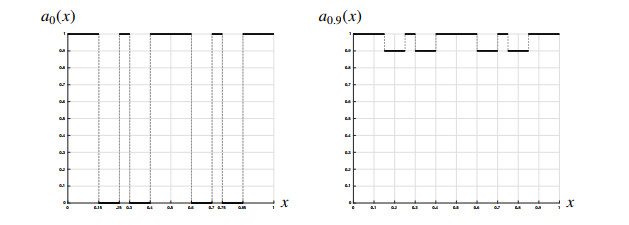
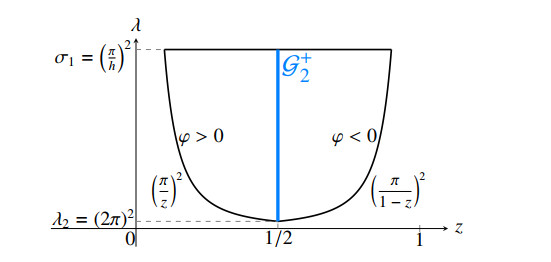
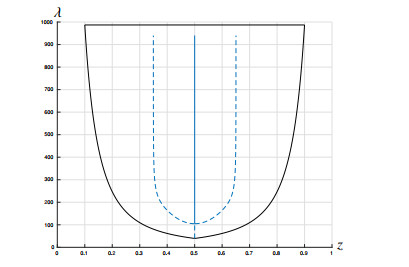

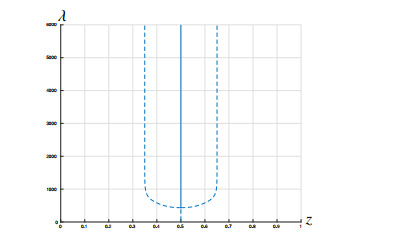

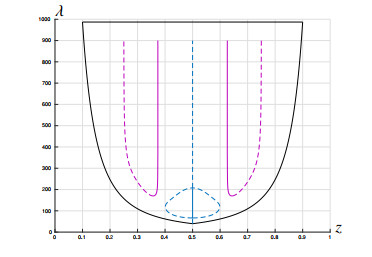


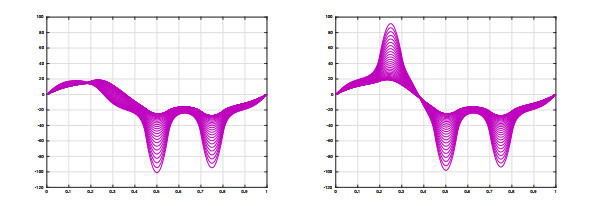
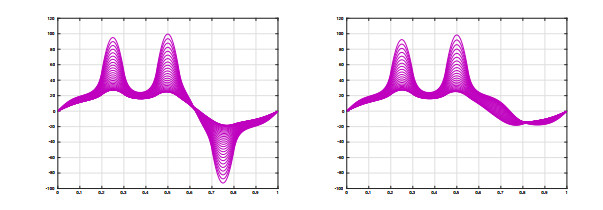

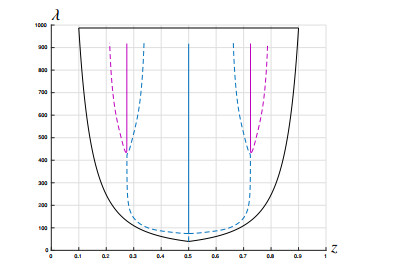
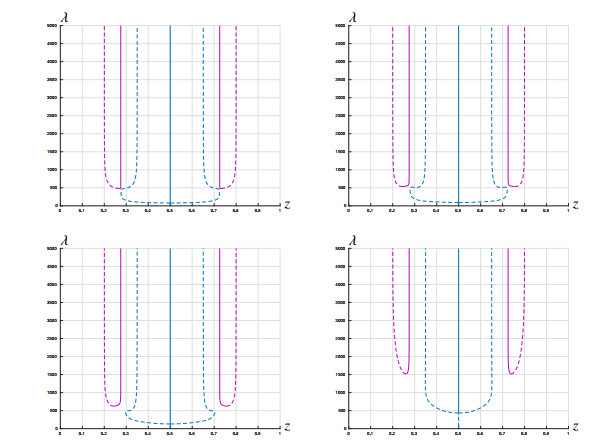

 DownLoad:
DownLoad: